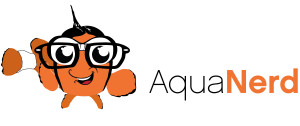
NP BioPellets
Aquarium Specialty has secured exclusive distributorship of NP BioPellets for the United States. Dubbed “solid vodka”, NP BioPellets are composed of biodegradable polymers than can be placed virtually anywhere in the aquarium. These BioPellets will allow aerobic bacteria to use the carbon source provided by the pellet, allowing the bacteria population to grow. Bacterial growth directly results in the reducing of nitrates, phosphates, and other nutrients. This conversion of organic BioPellets into microbial biomass is called immobilization. In addition, anaerobic layers will develop, resulting in additional denitrification. The excess bacteria will be removed by a protein skimmer or filter feeding invertebrates.

NP BioPellets Closeup

NP BioPellets Diagram
Some more info on this new product from Aquarium Specialty
On average this “solid wodka method” takes 2-4 weeks to give rise to sufficient bacteria to allow nitrate and phosphate levels to drop. The main advantage of this method over using Wodka or sugar as a carbon source is that NP-reducing BioPellets stimulate local growth of bacteria in a filter compartment, instead of all over in the aquarium where they may clog up pipes and hoses. They also prevent the growth of cyanobacteria, as the bacteria growing on NP-reducing BioPellets will compete with these phototrophic nuisance microbes. Finally, NP-reducing BioPellets will save the aquarist a lot of time, as no daily dosages of carbon are required.
A proper starting dosage is 0.5-1 liter of pellets per 500 liters of system volume (12,5-25 fl. oz. for every 100 USG). After about 2-4 weeks, nitrate and phosphate levels should start decreasing. For some aquaria experiencing heavy feeding, higher dosages are appropriate. NP-reducing BioPellets are consumed by bacteria, which is why new pellets need to be added every 3-6 months to compensate for digested substrate. This can be seen during inspection of the filter. These figures however depend on aquarium conditions and are strongly influenced by feeding regimes and livestock. Taking regular measurements of both nitrate and phosphate levels in the aquarium is recommended, after which dosages may be increased or decreased.
We also suggest placing the outlet of the pellet filter in front of a protein skimmer, to limit the amount of bacteria entering the system. This has the additional benefit of increased gas exchange (CO2-removal and O2-addition). The pellets should never be used without sufficient aeration, as this may lead to low oxygen and pH levels, especially during night time. Proper aeration can be established with air pumps and protein skimmers.
When heavy feeding is required, it is recommended to combine the pellets with standard phosphate adsorbents. The reason for this is that most aquarium feeds contain higher levels of phosphate than is consumed by bacteria, fish and invertebrates, when compared to nitrogen. Some phosphate adsorbents however deplete alkalinity and may reduce pH. Using phosphate adsorbent media based on iron hydroxide does not have this disadvantage.
Important:
– Maintain sufficient water flow through the BioPellets, to prevent production of hydrogen sulfide gas.
– The use of ozone and UV will negatively affect bacterial recruitment of the BioPellets and increase the maturation time of the filter.
– When nitrate and phosphate are already very low before applying BioPellets, a decrease in these levels may not be detectable with standard aquarium test kits.

NP BioPellets
Permissions and Sources:
Aquarium Specialty





